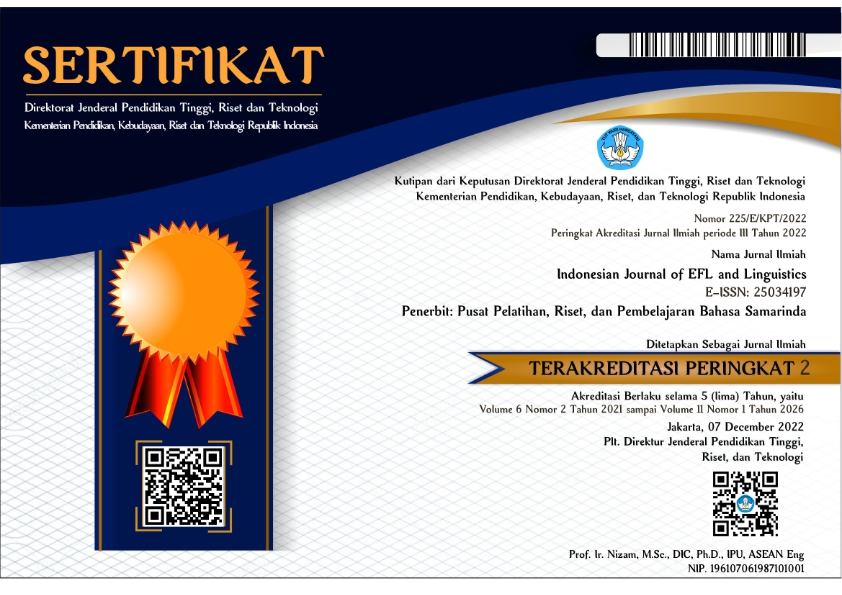Functional Categories of Lexical Bundles in Indonesian EFL Textbooks: A Corpus-Based Study
Abstract
Lexical bundles, which are recurring sequences of multiple words, play a crucial role in both written and spoken discourse. Understanding the presence and patterns of these bundles in educational materials is essential for effective language instruction and material development.This research aims to identify the most commonly utilized functional classifications of 3-word lexical bundles in junior high school EFL textbooks. This study employed a descriptive quantitative research methodology with a corpus-based analysis approach. The study's main methodological framework is a corpus-based approach, which combines quantitative and qualitative components to offer a thorough examination of the data. The data of this research comprises a collection of Indonesian junior high school EFL textbooks officially approved by the Ministry of Education. Specifically, the study examined textbooks used in grades 7-9, published in 2022. AntConc 4.3.1 was used to analyze the corpus, and N-Gram Tool was used to generate the 3-word lexical bundles in this study. The study shows that the most commonly utilized functional classifications of 3-word lexical bundles in junior high school EFL textbooks is the referential expressions category; there are 914 bundles (44.76%). Furthermore, the implication of this research is that these bundles should be used by educators, especially those implementing the independent curriculum, to create instructional materials that enhance students' syntactic and pragmatic skills.
Copyright (c) 2025 Indonesian Journal of EFL and Linguistics

This work is licensed under a Creative Commons Attribution-NonCommercial-ShareAlike 4.0 International License.




